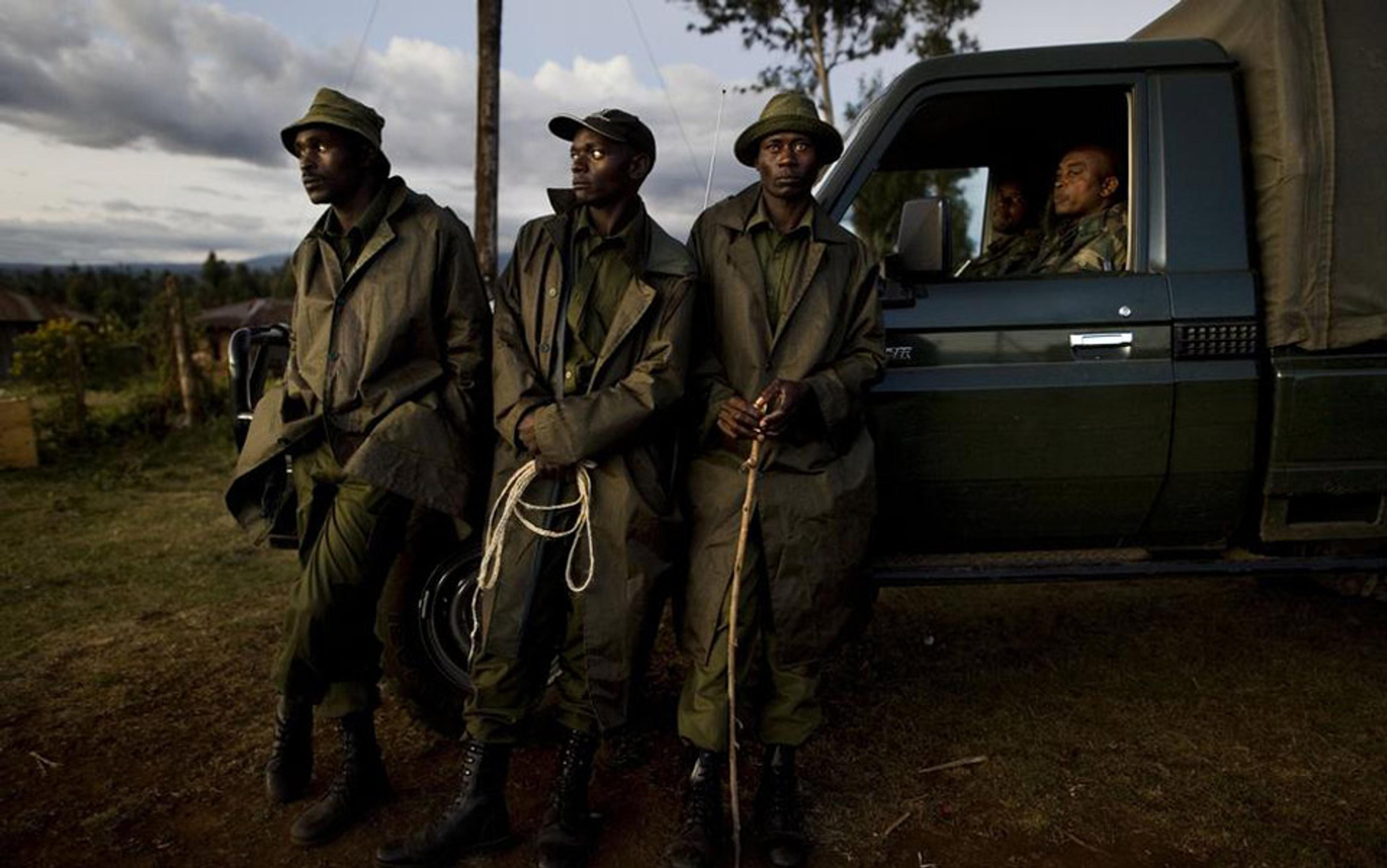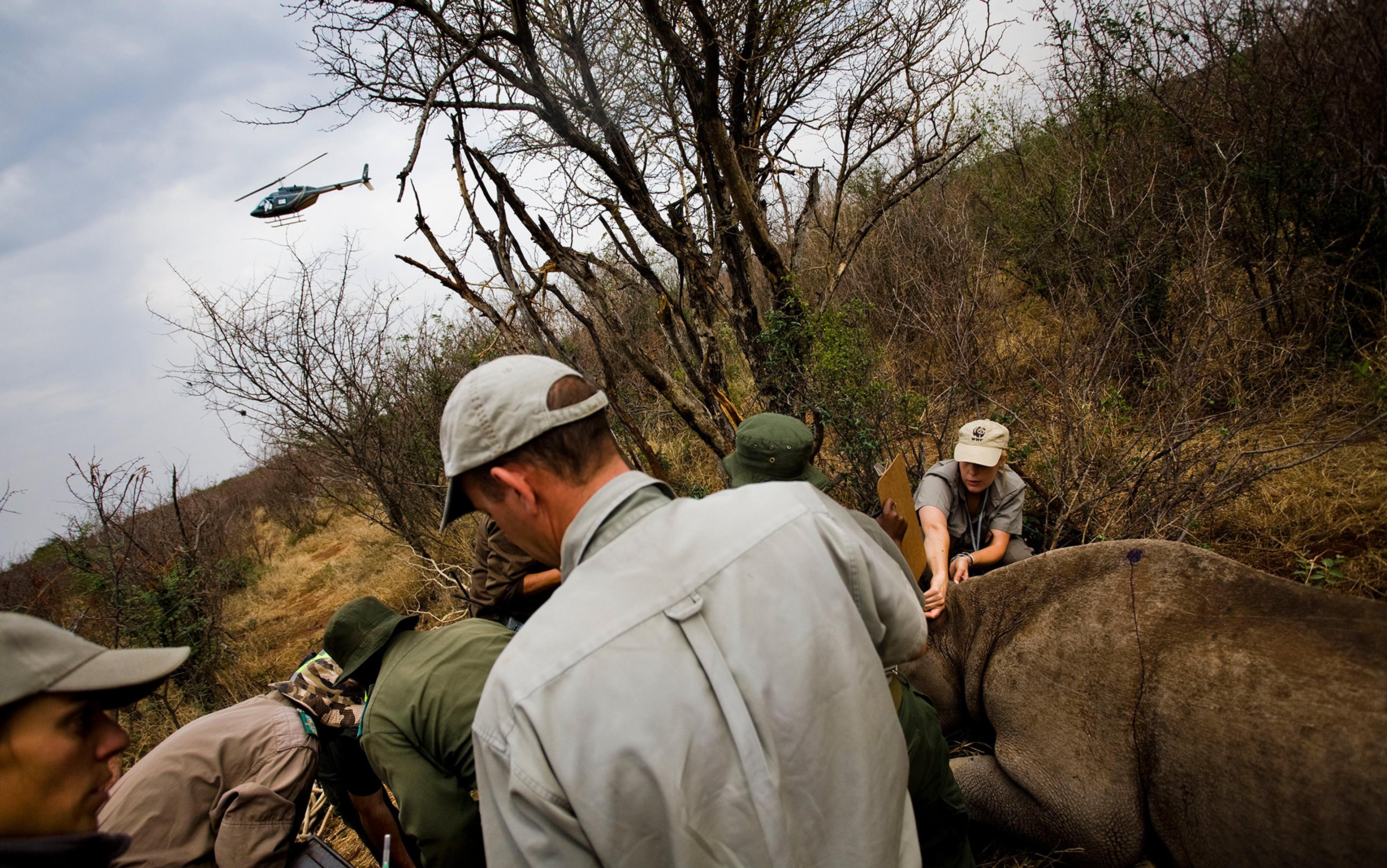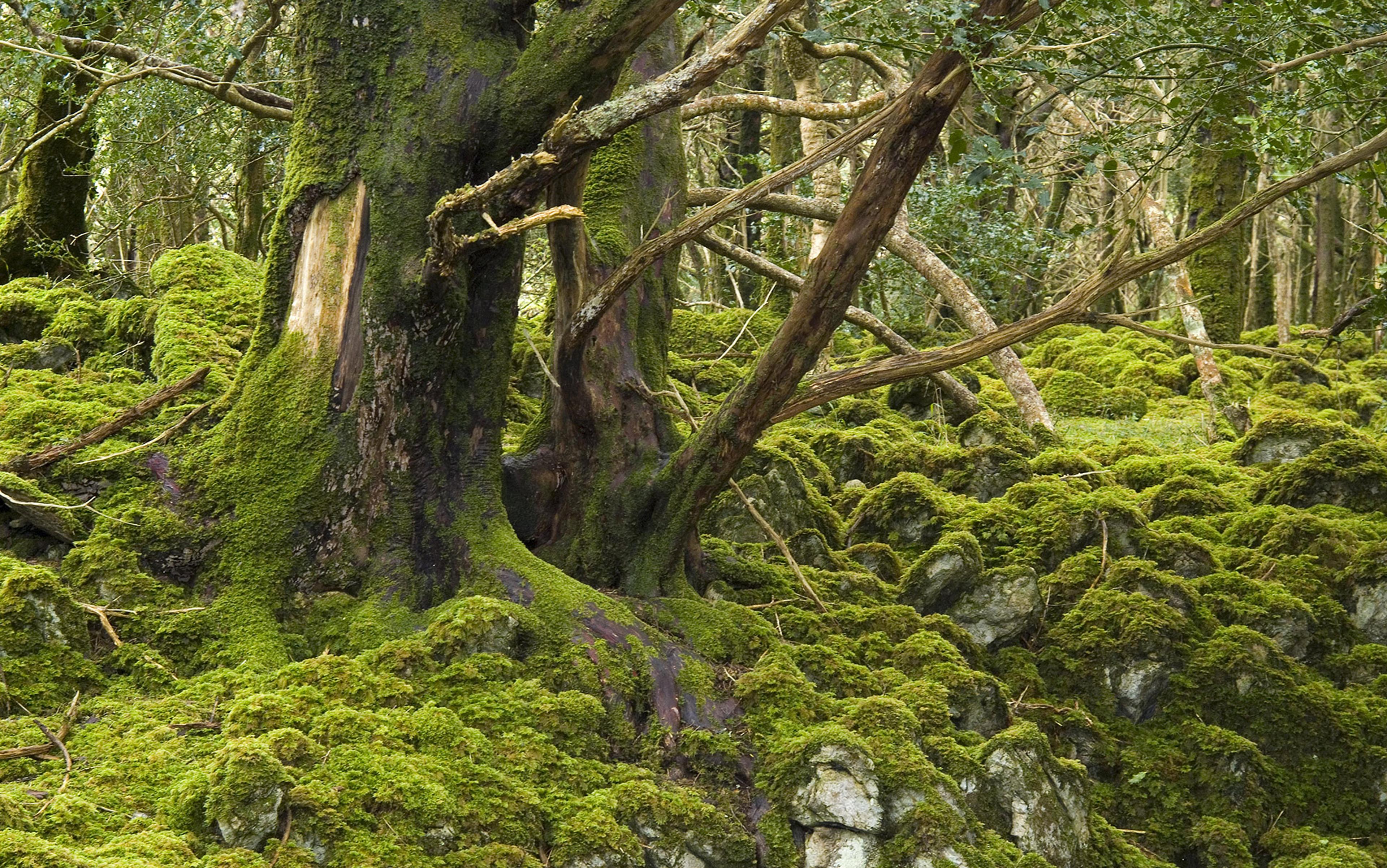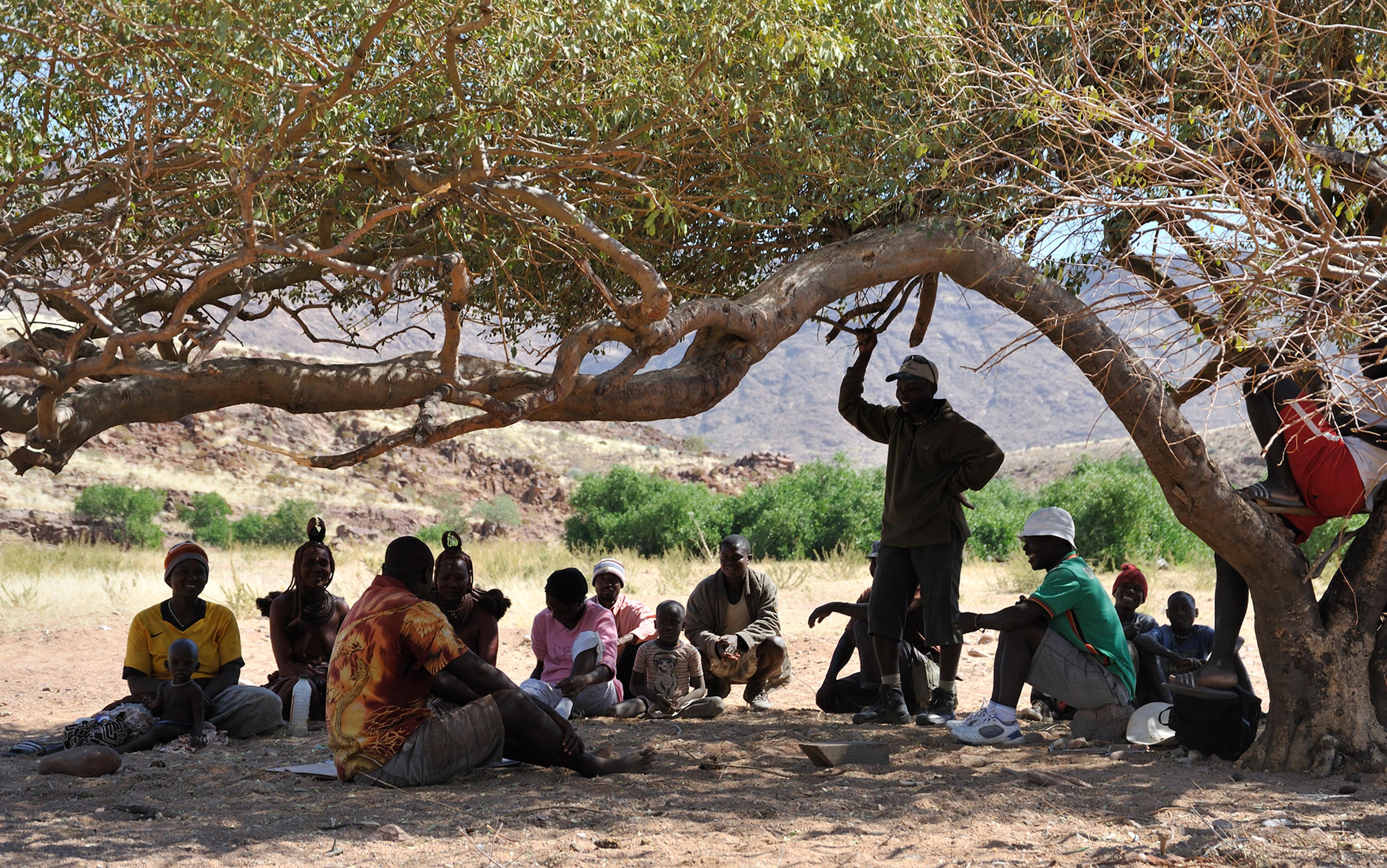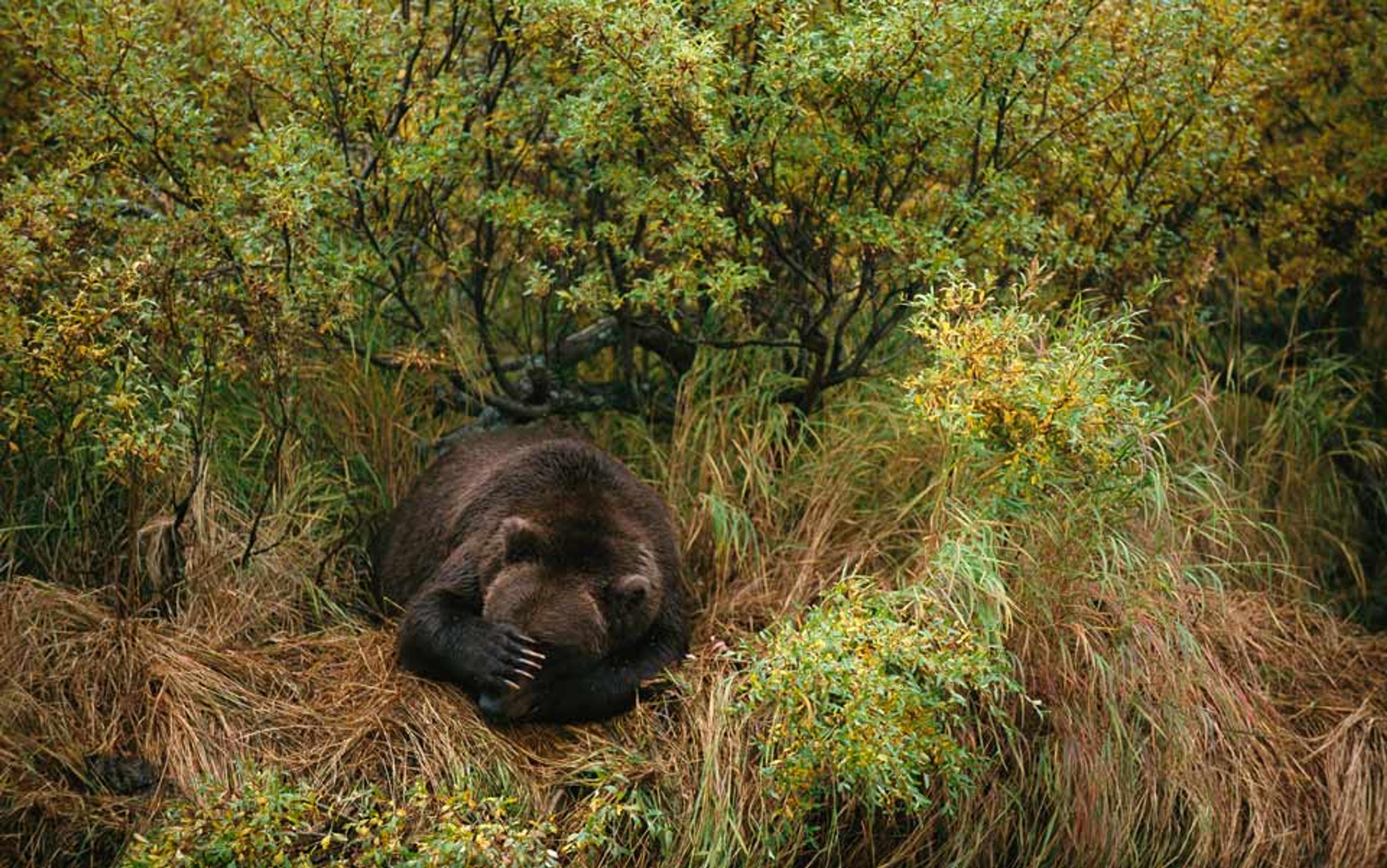Shouting over the rattle and creak of his antique Range Rover as it sped north from Nairobi, Christian Lambrechts is an affable harbinger of destruction.
The gleaming new Thika Road is jammed solid with traffic into town. Nairobi is a city on the rise, and a symbol of Africa’s urban future. A decade of uninterrupted economic growth in Kenya has seen the city become the centre of the region’s boom time. Plate-glass complexes are bursting out of the earth along every highway to house the country’s emerging middle class.
A city population of around 3 million in 2008 has risen to nearly 4 million today — although that number is probably already higher than the official estimates, as yet more migrants crowd into the muddy Golgotha of Kibera, the walled-off slum at the city’s heart.
Even with new roads and new houses, Nairobi’s infrastructure is groaning. Its power grid — never exactly reliable — is chronically under capacity. Its water utilities are similarly struggling to meet demand. The clogged and polluted waterway that runs through the slum ebbs and flows, but it is lower than ever after another long dry season. More alarming, however, is the pressure on the Tana River, which powers Nairobi, and the catchments of two main reservoirs which supply it with fresh water. As the city grows, these water supplies are shrinking.
Nairobi, according to Lambrechts, is living on borrowed time.
Like other countries in the region, Kenya has struggled with an increasing frequency of droughts and floods over the past decade, and Lambrechts, the new director of the conservation charity Rhino Ark, told me he knows why. The resilience of several of the country’s key ecosystems has been eroded by human action: small changes in temperature or rainfall can have immediate and severe effects on flora, fauna and human populations.
A case in point, he told me, is Lake Nakuru, which once was full all year round but now waxes and wanes with the seasons. Meanwhile, the upper catchment area in the Mau Forest that once fed it is ‘sick’ from the loss of trees. In the Nakuru National Park, the Kenya Wildlife Service has resorted to pumping water from an underground aquifer into waterholes to keep wildlife alive.
‘Is that a park in an ICU?’ he asked me, ‘Is it on a drip?’
One of the most valuable — and endangered — natural resources in the country is the fresh, clean water that flows from the mountain forests of the Aberdares, Mount Kenya, the Mau Forest Complex, Mount Elgon and the Cherangani Hills. Together they are known as Kenya’s ‘water towers’. From the high catchment areas on the upper slopes of these mountains, thick with forests, comes the water that sustains not just the capital, but also the vital tea crops across the whole of Central Province, the flower farms and tourist havens of Lake Naivasha, and the world famous grasslands of the Maasai Mara.
More than 50 per cent of the country’s installed electricity-generating capacity is based on hydropower — on dams built on the outputs of these giants. The unexploited rivers in the Mau could add nearly half again, and eat into the prohibitively high fees on imported fuel that make electricity a major block on economic growth.
‘It’s not that we are tree-huggers,’ said Lambrechts, ‘The key is to realise the dependency of our economic activities on these ecosystems… We have grown as a country, we have developed, and those developments have been made as a result of these ecosystem services.’ The mountain barriers break the clouds, and the trees regulate the water from the resulting rainfall, storing it in vast aquifers that feed the nation. More than 80 per cent of the population are clustered around these water towers or the rivers that flow out of them. The towers are at the heart of a vast web of ecological and economic dependencies that we are only just beginning to understand.
The short rains come late, or not at all. In the north, vicious and regular droughts have left hundreds of thousands of people on food aid
Lambrechts is a veteran of the UNEP and an advisor to the Kenyan government on a variety of conservation issues, as well as its Vision 2030 development plan. He has worked from the Antarctic to Jordan, flown across Latin America in an experimental aircraft, overseen minesweeping operations during the first Gulf War, and sat at the top table of global environment organisations — so why would he join a relatively small charity devoted to wildlife preservation? The answer is that Rhino Ark has an audacious programme: for some years now, they have been building fences around entire mountaintops. At first, these electrified wire barriers were intended simply to separate wildlife and people. But now it seems that they might be the key to the future of Kenya’s water supply.
It was the end of the dry season, but as the Range Rover approached the foothills of Mount Kenya, the farms to either side of the road were lush, with coffee growing dark green in the shade of banana trees and cattle grazing in pens. Higher up the slopes, gold expanses of unpicked tea leaves flickered in the wind. The grey-blue shadow of the mountain, swaddled in cloud, dominated the whole horizon.
Mount Kenya incorporates both a national forest reserve and a national park, established in 1949. It is familiar territory for Lambrechts. In June 1999, alongside the former senior warden at the park, Bongo Woodley, he flew more than 50 hours in a light aircraft — largely at his own cost — to perform the first detailed aerial survey of the area, tracking the damage done by illegal logging, settlement and excision of the forest for agriculture.
At Castle Forest, a few kilometres before the main gate into the forest reserve, Lambrechts turned off into a bare field by a homestead. Watched by cattle, he picked his way through a small wooden gate and over the dirt to a 7 foot-high fence with eight strands of electric wire above a base of lock mesh. A plaque marked the point in the muddy field where in September this year Kenya’s finance minister, Njeru Githae, inaugurated the fence’s first 8km and pledged 200 million Kenyan shillings ($2.3 million) a year until it is built. Upon completion, it will stretch 400km around the entire forest. ‘We’re not just putting in place poles and wires,’ Lambrechts told me. ‘We’re putting in place systems and tools to manage the ecosystem.’
For years, the local communities have engaged in often fatal battles with the forest’s elephants, buffalo and baboons, who encroach on their farmsteads, destroying crops and livelihoods
Referring to himself as ‘that small man’, Simon Gitau, the Kenya Wildlife Services’ current senior warden at Mount Kenya, is a compact and energetic man in his early forties. We met in his office near the entrance of the Park. ‘The water towers are more important than any other mineral or natural resource,’ he told me. ‘The water towers are our lives. Unfortunately, not all of us who are using these resources directly or indirectly know the value of these water towers… On Mount Kenya, for a long time, I would say, the biggest threat has been ignorance.’
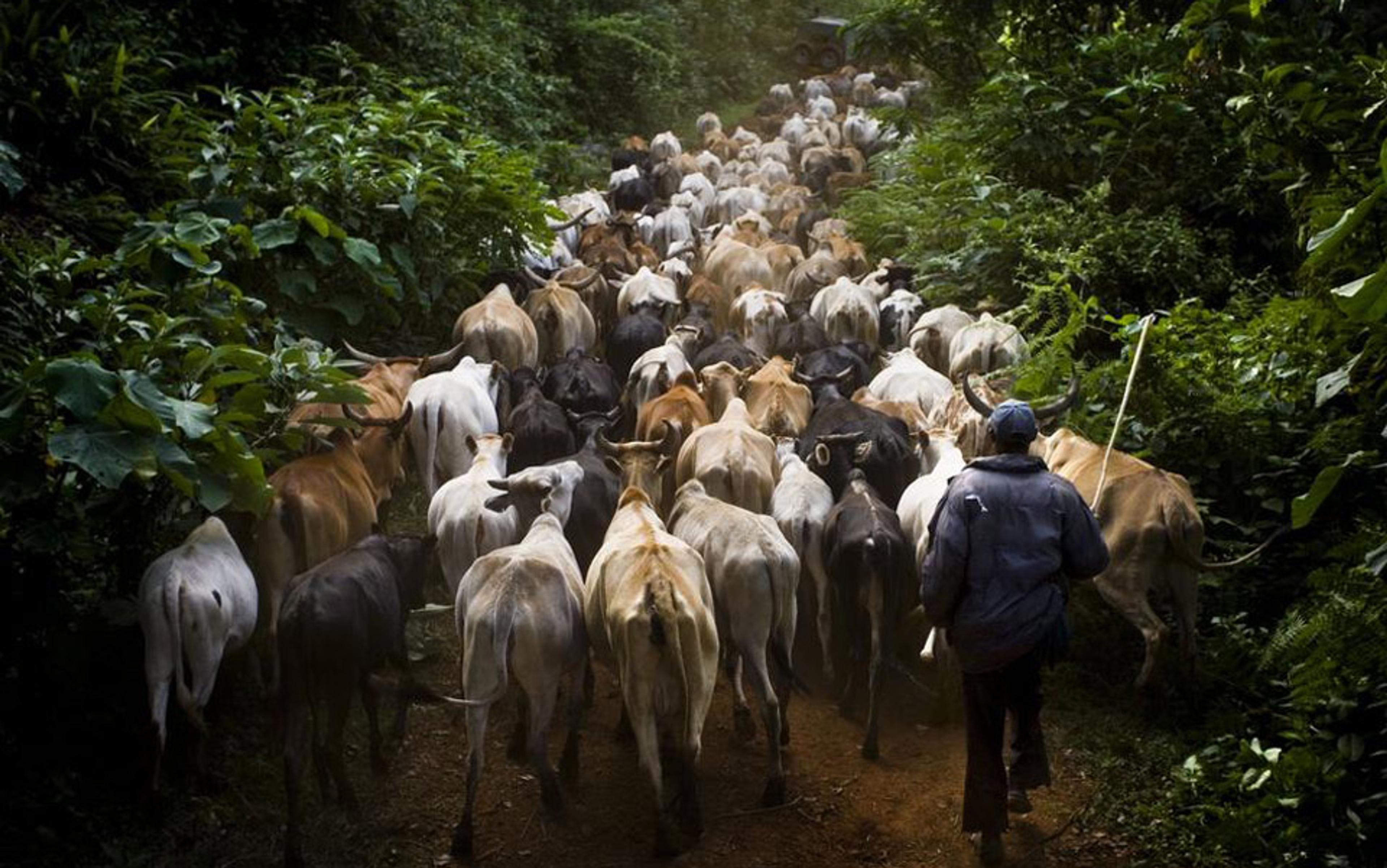
Cattle are being driven up a road in Mount Kenya forest. Photo by Dominic Nahr/Magnum
In the 1990s, government-sponsored removal of indigenous forest and human encroachment of the area was seriously degrading the ecosystem, Gitau said. Today, state-sponsored destruction has ended, but population pressures — and the resultant human-animal conflicts — remain. For years, the local communities have engaged in often fatal battles with the forest’s elephants, buffalo and baboons, who encroach on their farmsteads, destroying crops and livelihoods.
In addition, highly organised rhino and elephant poaching for horn and ivory for Asian markets has increased pressure in recent years. Earlier that evening, Gitau had received reports of armed men entering the forest, and had sent a team of rangers in pursuit. Illegal logging has also been industrial in scale. Driving through the forest later, Lambrechts explained that loggers used to sneak in at night and bring down trees, leaving them in pre-prepared lay-bys. Officials would be bribed to turn a blind eye, and a truck would drive into the forest to pick up the timber. In the process, the forest lost many of its precious hardwoods. Gitau said he hoped the fence will mitigate some of these issues.
‘Temperatures are rising,’ Gitau said flatly. ‘When I was young, if you left water outside overnight in my home area, which is 2,000 metres above sea level, when you woke up in the morning, the water would have turned to ice. Today, nothing. That tells you temperatures have been rising. I don’t want to see the Al Gore movie [An Inconvenient Truth]. I have seen it happen here.’
He added: ‘With the temperatures rising, the ground vegetation is very dry, and this keeps any small fire in the indigenous forest burning for days. Before, [fire] was not classified as a major threat, today it could be number one.’
Ask almost any farmer or aid worker in Kenya whether climate change is real, and they answer with a resigned shrug. For the past few years, they have lived with it. The short rains come late, or not at all. In the north, vicious and regular droughts have left hundreds of thousands of people on food aid. The rain that does come is unpredictable, sometimes leaving the land parched, at other times washing over it in devastating flash floods. The equatorial belt, whose clockwork climate made rain-fed agriculture prosper, is broken.
This is what makes the mountain forests so important. As well as the higher incidence of rainfall at these altitudes, where the clouds blowing in from the Indian Ocean break over the mountains, the forests accumulate considerable additional water through a mechanism known as ‘water stripping’. The leaves of trees at high altitudes condense windblown moisture as the wind whips through them. The soil underneath the forest is dense, absorbing and retaining water, thanks to the process of decomposition of the rich biodiversity at the surface. The net result is that the forest does more than just collect rain, it actually fixes water into the landscape. Areas such as the Mau that have seen severe deforestation are already experiencing desertification — without the trees, the water table will disappear and the whole country will suffer.
In 2012, the United Nations Environment Programme (UNEP) released its assessment of the country’s forests. Between 2000 and 2010, around 50,000 hectares had been lost to deforestation. By 2010, the directly attributable, cumulative annual loss from reductions in dry season river flows and hydropower was around 3.6 billion Kenyan shillings — around $USD43 million – a year. Without urgent action to preserve the mountain forests, the ‘water towers’ will no longer work.
Gitau remains optimistic, however. ‘We are heading in the right direction,’ he said, ‘But we have to keep up the pressure to protect these resources.’
Despite all of the funding promises and the social infrastructure built around it, it is hard to see a 400km fence around an entire African forest ecosystem as anything but bold, perhaps even a bit deluded. Except that it has been done once before — just next to where Gitau was born, on the western side of the Aberdares.
Rounding the mountain, where its leeside stretches out into a tan-coloured plain, the link between economic opportunity and the availability of water is clearly visible. Here, where the dust rises higher in the tyre tracks of the matatu minibuses en route to the national reserve, the small towns clinging to the roadside are leaner, the façades of the shops scraped clean by the dust and not repainted, the maize fields parched and the livestock thinner.
Far out to the west stretch the Aberdares, a forested mountain range that is the source of the Tana River, the same river that flows through Nairobi. Since 1989, Rhino Ark has been working here on a fence project that is a model for their work in Mount Kenya and the other fences slated for construction around the country’s water towers.
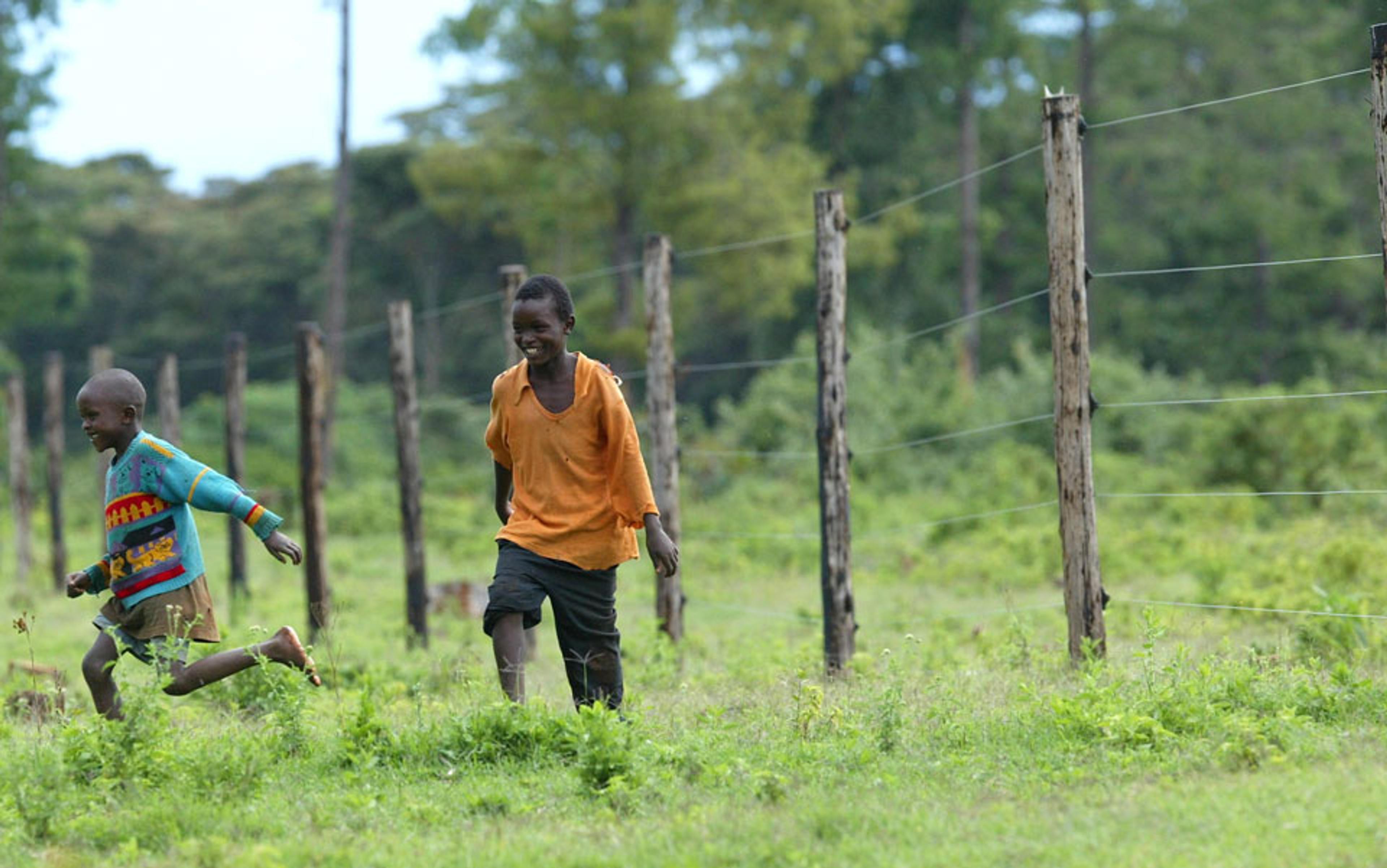
Children living on the edge of Mount Kenya forest play near the electric fence. Photo by Karel Prinsloo/AP
Colin Church, now an adviser to Rhino Ark, was one of the founders of the project and never expected it to go beyond its original goal of protecting the black rhino from poachers in a small part of the park. But it snowballed. First there was the increase in mountain forest cover — according to a recent report, a 20 per cent increase between 2005 and 2010. Just as important was the effect on local communities.
‘The farmers saw its benefit to their livelihoods,’ Church told me. ‘Their cabbage and potato crops came to harvest undamaged. Their kids walked safely to school, and old ladies cutting wood fuel in the forest no longer faced angry elephants.’
Lambrechts also points out that the fences are constructed by local labour, providing immediate economic benefits; in addition, locals are employed as fence monitors. The charity is in the process of establishing a longer-term trust fund system, to provide the monitors with better terms, in response to requests from the community. The mix of public-private partnerships and local-level support offered, he said, a blueprint for mutually beneficial forest conservation.
‘There were years when we used to have food relief, now we feed ourselves’
On the edge of the 400 km fence around the Aberdares, Peter Kibuka, the chairman of a local community group, stood watching as, on the other side, a troop of baboons patrolled lazily through a slumbering buffalo herd.
‘We call this the bedroom,’ Kibuka said, laughing. ‘The animals come here to sleep.’
While he can now joke about the opportunity for ‘local tourism’, he remembers the conflicts before the fence was built. ‘Leopards ate our sheep, elephants and buffalo ate our crops,’ he told me. The trench that was dug to keep the animals out was a failure. Elephants eventually learned to collapse the sides and break through. Guarding the fields from wildlife round the clock meant that children did not go to school. Elephants could destroy an entire crop of maize or bananas in one night, and villagers were regularly killed or injured trying to fight off the incursions with flaming torches. The number of elephants killed by the Kenya Wildlife Service for threatening humans was higher than those killed by poachers. That has been reduced dramatically, James Magena, the park’s acting head warden, told me.
‘Economically, we are better off than we used to be,’ Kibuka said. ‘There were years when we used to have food relief, now we feed ourselves.’ The same community organisation that helps to maintain the fence has used patches of the land the fence has made viable to build a nascent horticulture industry, growing onions and beans. The trench once dug to keep out the buffalo has been backfilled and is now sprouting with the seedlings of pondo trees. This, Kibuka explained, was a bid to ‘reclaim the glory of our original forests’ which had once been invaded by faster growing — hence more commercially attractive — imported species. However, these benefits are not universal. Some areas reportedly suffer from far weaker enforcement: Magena told me that where there was little formal agriculture or legal economic activity on the forest boundary, the benefits have been far less clear.
As Adam Mwangi, Rhino Ark’s community manager for the Aberdares and Mount Kenya, explained it to me, the art is in managing the fence and ensuring that it works as a valve, rather than as a barrier. This brings communities, the Kenya Wildlife Service and the government into a positive relationship with one another. The community groups around the fence feed into the service’s intelligence networks, and just a few weeks ago warned them of three poachers who had entered the park with a .303 rifle to hunt elephants, according to Magena.
Even so, the idea of cutting off the neighbouring communities from an ecosystem that provided livelihoods — both legal and illegal — is inevitably controversial. Although it has been welcomed by many whose land directly abuts the forest, the reality is that the fence is not just for keeping the animals in — it is also for keeping people out. Locals are allowed to bring their animals in and deadwood out, passing through manned gates in a process that allows for tracking and management. But the ultimate aim is to eliminate grazing and minimise the extraction of firewood, with the sweetener of keeping wildlife out of farmland.
So far, this peculiar alliance of interests seems to be working: there has been little incidence of large-scale sabotage or protest, in a country where land and politics are often violently intertwined. However, it is worth remembering that the Kenya Wildlife Service is effectively a heavily armed paramilitary organisation, whose clashes with poachers are often deadly. Just in April this year, its rangers shot dead five suspected poachers.
Resettlements – or expulsions – are much more contentious. If the fencing of all of Kenya’s water towers is a viable possibility, it will entail much more intervention and relocation of local people — and consequent conflict and injustice. In particular, Rhino Ark’s grand vision could place them right into the middle of one of Kenya’s great unresolved conflicts — the Mau.
The Mau forest is the site of the largest water tower and the one with the most fractious history. The home of hunter-gatherer peoples until the mid-20th century, it was subject to intensive settlement under the Kenya African National Union governments of the 1970s through to the 1990s — including the distribution of land to influential politicians, such as Daniel arap Moi, and their supporters and families. According to the UNEP, more than 130,000 hectares of the forest were lost in the resulting deforestation between 1973 and 2005. The settlers are still there, but in 2009, the government ordered their eviction on environmental grounds. Tens of thousands of families remain. Every attempt to move them leads to more politicking, more conflict. Much of the land was given to supporters and members of Moi’s ethnic group, meaning that the battles quickly take on an ethnic tenor.
The protracted disputes over the Mau are a powerful demonstration of the conflict between local and national interest. The country needs the forests, but so do those who live in them. The rhetorical ‘battle’ for the environment can become a real one. Around the Aberdares, the process of saving the forests has largely been based around negotiation and inclusion — although a 2011 report warned that more needed to be done to fully integrate local stakeholders into the management process. When the government is forcefully moving people from their homes, as they are in the Mau, the political-environmental trade-offs are likely to be considerably more complex, and the fences far less popular.
It is easy to see why Rhino Ark recruited Lambrechts, who is deeply embedded in the country’s politics and its ecology. There seem few conservation projects in Kenya that the Belgian has not been involved in, and his passion for the country is clear — although it is tempered by his very vocal anger at the bad governance and governmental turf-fighting that has made his job more difficult.
Lambrechts hopes that, one day, the government will be able to put a line in the budget for the economic value of ecosystem services. But any number they pick now would be a finger-in-the-air calculation, and in a country where money is scarce, that requires political courage. It is a calculation, he said, about economic growth, food security and, ultimately, the country’s ability to protect its people. Kenya cannot wait for the economic models to catch up.
‘This is not a short-term project,’ Lambrechts said. ‘This is about a country coming to terms with what it has to do.’
Lambrechts’s message is that this government, and others, need to ascribe a clear economic value to ecological resources, like these rain-producing mountain forests. The nation should define the ecosystems as infrastructure that requires active management and investment in order to continue to provide support to national development, just like roads and other national infrastructure. In part due to his advocacy, the government has created an agency to coordinate investments in the water towers and write their rehabilitation into the country’s long-term development plans. Lambrechts believes that embedding ecological concerns into the heart of the national economy is the best route to sustainability, and he is not alone.
The low shadows of hyenas flickered by the roadside, and bushbuck antelopes scattered from the path
The 2006 Stern Review on the economics of climate change remains the reference text for understanding the impact of longer-term anthropogenic climate change on the global economy. The report, commissioned by the UK government, laid out in stark terms the dollar cost of climate inaction and called for environmental costs and benefits to be fully incorporated into national economic metrics. The decline of Kenya’s montane forests and the fresh water they produce might not be a direct result of climate change, but it too provokes questions about how we go about valuing nature and the goods it provides us. The value of a forest is more than the sum of all its wood, and wider than its boundaries.
‘To really understand the ecosystem,’ Lambrechts told me in Rhino Ark’s spartan office at the base of the Aberdares, ‘you have to see what we are talking about.’
As the Range Rover climbed through the lower expanse of the mountain range, ahead on the horizon, the water cycle was at work. The giant finger of Mount Kenya reached up and swirled the white clouds into a sticky grey morass, breaking them into rainstorms on its upper slopes.
‘It is not that we are lacking rain,’ Lambrechts said, watching it out of the window as he steered the four-by-four. ‘We have enough rain in Kenya. [The issue] is the distribution of the rainfall across the year and the need for natural reservoirs.’
In the park, the hydrology and biodiversity were written plainly across the landscape. The cloud forest itself was haunting. Lichen hung in long, pale fronds from the trees, a sign that the clouds have lingered over this patch of the forest for the plants to take water directly from the moist air. The low shadows of hyenas flickered by the roadside, and bushbuck antelopes scattered from the path. Higher still was a dense bamboo forest, one of the most efficient natural reservoirs. All along the path, their shattered stems leant over, tunnels smashed into the foliage by the passage of elephants, a major component of this dynamic ecosystem.
Above the treeline and below the snow-topped peaks was a broad, grassy moorland wild with waterbucks and dotted with shallow lakes that Lambrechts said are good for trout fishing. On the way across, he told me stories of losing companions on the moor, of himself getting hopelessly lost in the impenetrable bamboo forest and following an elephant track down the mountain.
Later, on the drive through the night back to Nairobi, punctuated by stops to repair the Range Rover with strategically folded scraps of paper, Lambrecht talked first of the satisfactions and frustrations of working for international organisations — where discussion sometimes overtakes action — and then of the realisation, after being involved in the aerial mapping of Mount Kenya, that the right action in the right context can have a systemic impact. The Rhino Ark fences are physical structures. At a time when environmental challenges can seem impossibly complex and abstract, they provide a simple, tangible goal.
‘And,’ he said. ‘They work.’
